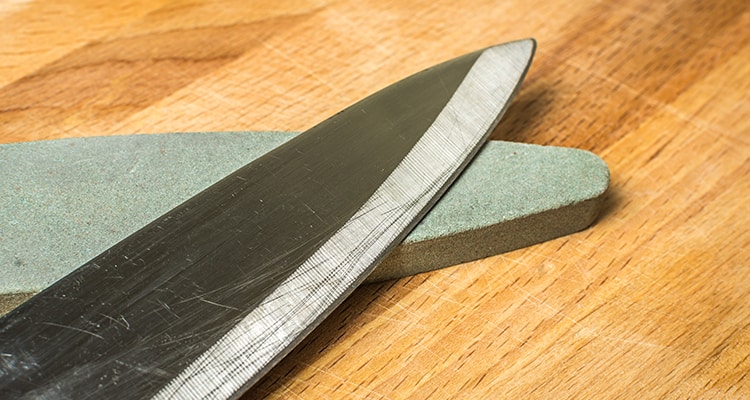
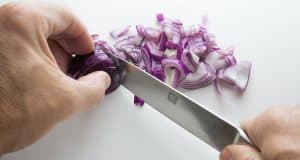

There are many different kinds of knives and blades on the market. Some help you chop vegetables quickly, some are for producing thinly sliced meats, and others are for self-defense, everyday tasks, shaving, and even ceremonial purposes. You likely have at least one kitchen or pocket knife in your home.
An important part of owning and using any knife is its maintenance, which includes keeping it sharp. This is your guide to sharpening different kinds of blades, how to use various sharpening tools and the difference between sharpening and honing.
So how do you sharpen a knife? It really depends on the type of knife being sharpened, but generally, you will use a knife sharpener, sharpening stone, or sharpening rod or steel. With each of these methods, you should pull the knife, rather than push on it.
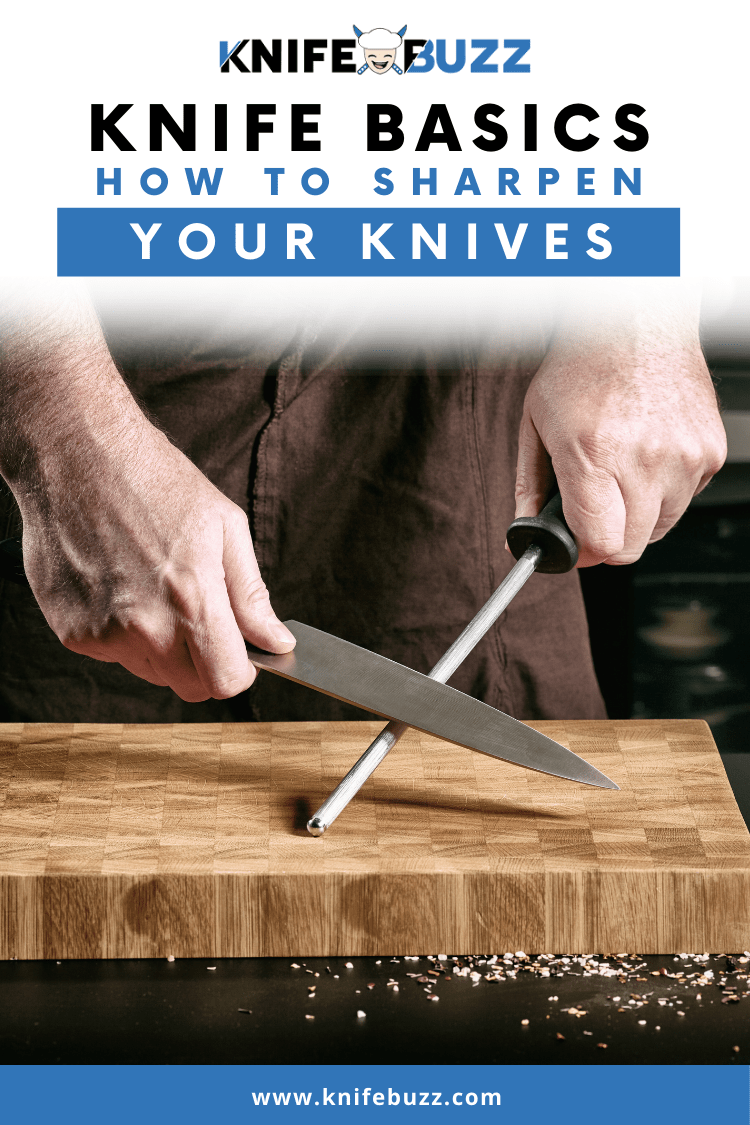
There are several methods you can use to sharpen a knife. The one you choose will largely depend on the type of knife you want to sharpen – a pocket knife will require a different method of sharpening from a large sword, for example.
For the most part, it’s best to pull the knife towards you while sharpening it, regardless of which method you choose. This is safer and more effective than pushing the knife with force.
Remember to practice safety when sharpening any knife. Even the bluntest knife can cut you when you try to sharpen it if you’re not careful.
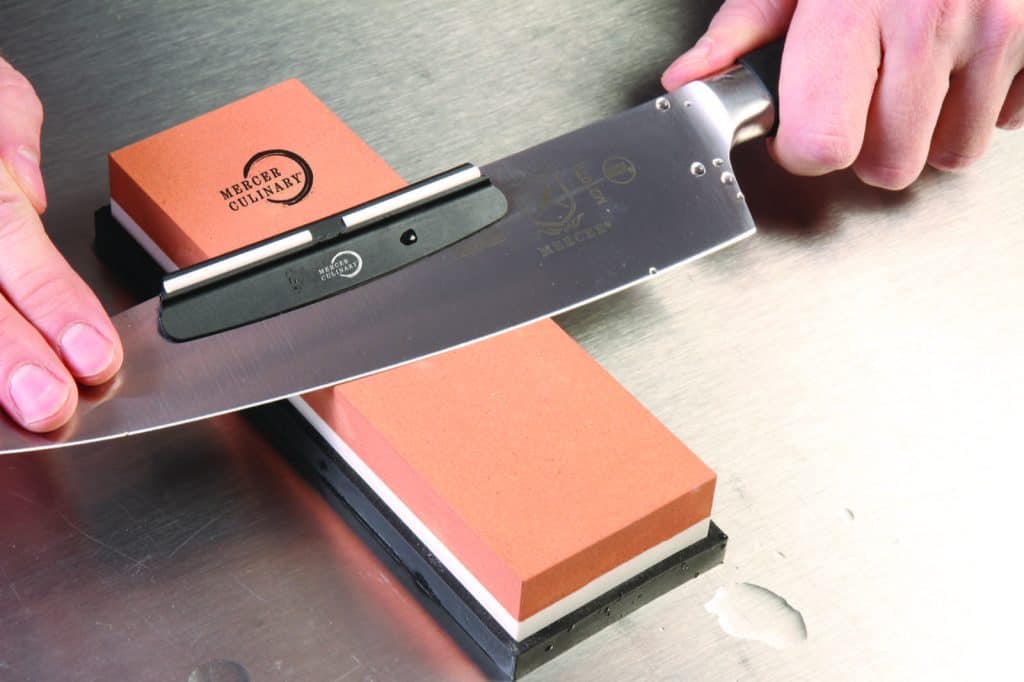
The main methods of sharpening knives include:
Pocket knives can be challenging to sharpen, due to their small size. Caution should be exercised for this reason. The best method for sharpening a pocket knife is with a sharpening stone. Follow these steps to safely and effectively sharpen your pocket knife:

Serrated knives, such as bread knives and certain pocket knives, also pose unique challenges, due to their serrated edges. A sharpening rod is the best way to sharpen serrated knives. The following steps will keep your serrated knives sharp and effective:
Ceramic knives are often used in the kitchen because they supposedly never grow dull, though this claim is usually a marketing gimmick. Ceramic knives do, in fact, become dull and dangerous. This will typically take six months or so, but it will happen eventually.
The challenge with sharpening ceramic knives is the fact that they are very brittle. But it can be accomplished, with extra care and a sharpening stone.
Follow these steps for success when sharpening a ceramic knife:
The best way to sharpen a sword is to use a whetstone. However, swords are larger and heftier than your typical kitchen or pocket knife, so the technique is a bit different. These steps will help you sharpen a sword:
Straight razors provide a close, clean shave and can last a lifetime. They do need periodic sharpening, though – typically, every few months. If you notice more of a tug on your hair or razor burn, it’s time to sharpen your straight razor.
Sharpening is best done with a whetstone. These steps will help your straight razor stay sharp:
Knife sharpeners can save you time when sharpening your knives. There are two main types: electric and pull-through.
An electric knife sharpener features rough sharpening surfaces that rotate inside the machine. Some may also have multiple stages with both rough and fine grits. This type of sharpener is very easy to use – you simply pull the knife through the sharpener, applying little to no force.
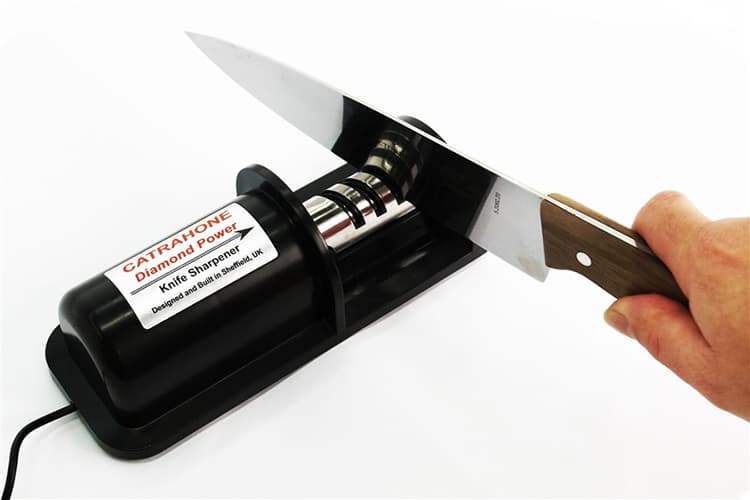
A pull-through sharpener is very similar to an electric one. The main difference is that it is manual rather than electric. It is also often smaller, which is why it is sometimes called a handheld sharpener. It features a stationary grinding surface. To use this type of sharpener, pull your knife through the slot across the grinding surface with moderate pressure.
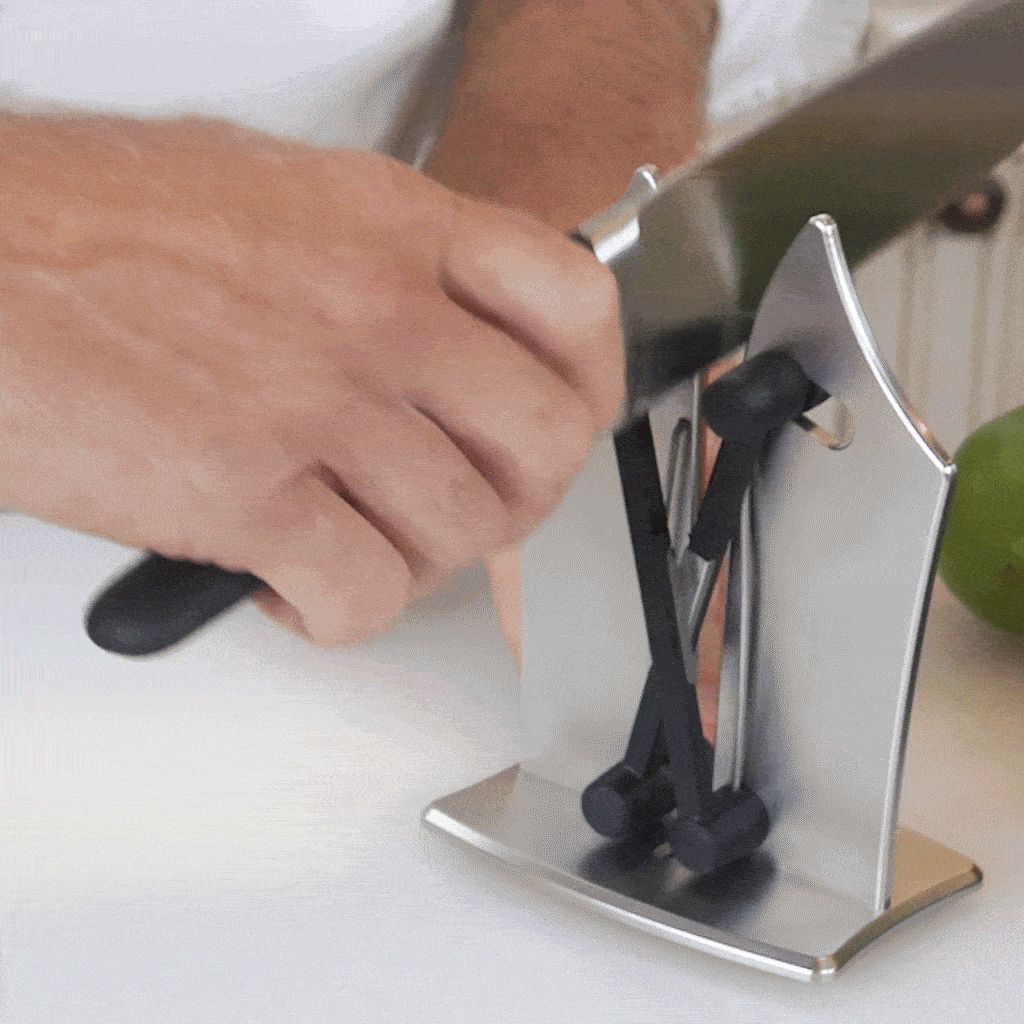
Sharpening stones are best for pocket knives, ceramic knives, swords, and straight razors. There are many kinds of sharpening stones available, from standard whetstones and Japanese water stones to pricey diamond-encrusted stones and everything in between.
All sharpening stones have two sides to them: a rough side and a finer side. These are referred to as “grits”. Generally, you want to start sharpening on the rough grit and finish on the finer grit.
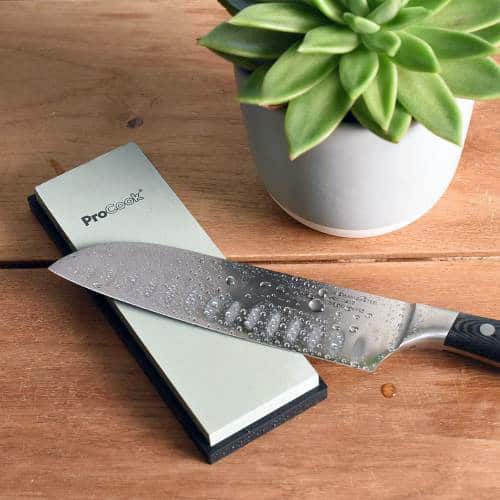
The basic steps for using sharpening stones include:
Sharpening rods are best for serrated knives. They come in a variety of sizes, and the size you choose will depend on your needs. For serrated knives, smaller rods are best. Keep in mind, though, that most sharpening rods are tapered, so even a larger rod may still serve your purposes.

The method used will also depend on your purpose. For sharpening serrated knives, you simply run the sharpening rod through each gullet, going in one direction and applying light pressure. Repeat until all gullets have been polished.
Sometimes you don’t have a sharpener, stone, or rod handy. In these situations, you will need to find some other method of sharpening your knives. The following alternatives can help you do just that:
You may have heard of honing steels, which may have been mentioned alongside sharpening steels. What is the difference between honing and sharpening steels?
The main difference is that they are used for different stages of knife maintenance. Sharpening steels are used to sharpen knives that have become dull, while honing steels are used to keep a knife sharp that has not yet grown dull. Honing steels do not remove metal in the way that sharpening steels do; they simply maintain the knife.
Sharpening knives can sometimes be time-consuming, but not doing it will cost you in the long run. Dull knives are more dangerous than sharpened ones, resulting in time wasted on covering the cut or even going to the emergency room for serious wounds. Old knives that have not been sharpened in a while can become damaged or even shatter, resulting in costly repairs or replacements.
You can avoid all this trouble by taking the time to sharpen your knives. Sharpeners, stones, rods, and steels are all effective tools for keeping your knives sharp. Make sure to learn how to use your chosen tool and how to sharpen your specific knife. This will eliminate a lot of drama later on.
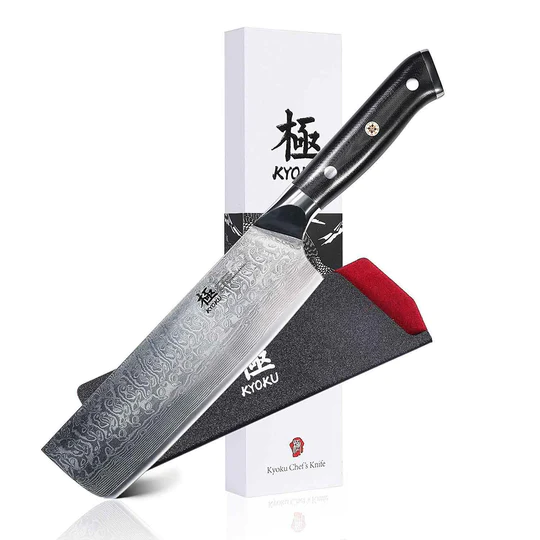
Knife Buzz offers independent product reviews on a wide range of knives used in the kitchen, home, and outdoors. We make it easy for you to find the right knife at the best price.

Knife Buzz offers independent product reviews on a wide range of knives used in the kitchen, home, outdoors and at work.
The Knife Buzz Team are passionate about reviewing knives and we cater to a targeted audience that needs independent advice before purchasing.
KnifeBuzz.com may earn affiliate commissions on some pages of this website. Knife Buzz is a participant in the Amazon Services LLC Associates Program, an affiliate advertising program designed to provide a means for sites to earn advertising fees by advertising and linking to Amazon.com. Amazon and the Amazon logo are trademarks of Amazon.com, Inc, or its affiliates. When you click links to various merchants on this site and make a purchase, this can result in this site earning a commission. Other affiliate programs and affiliations include, but are not limited to, Google AdSense.